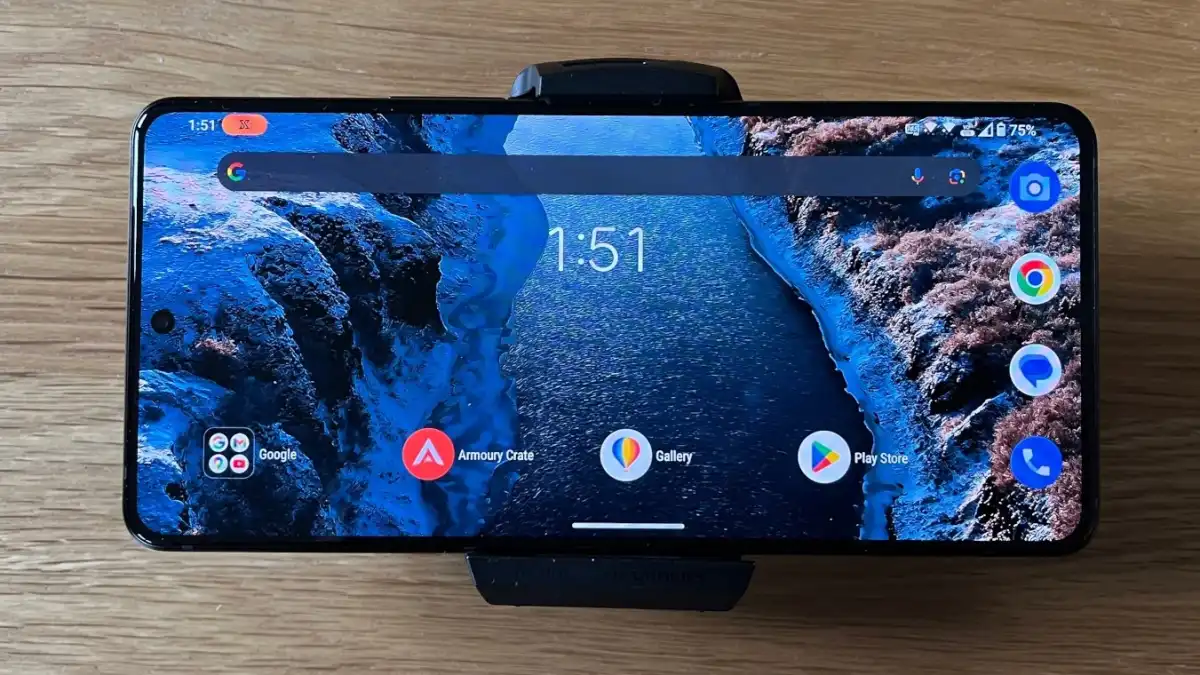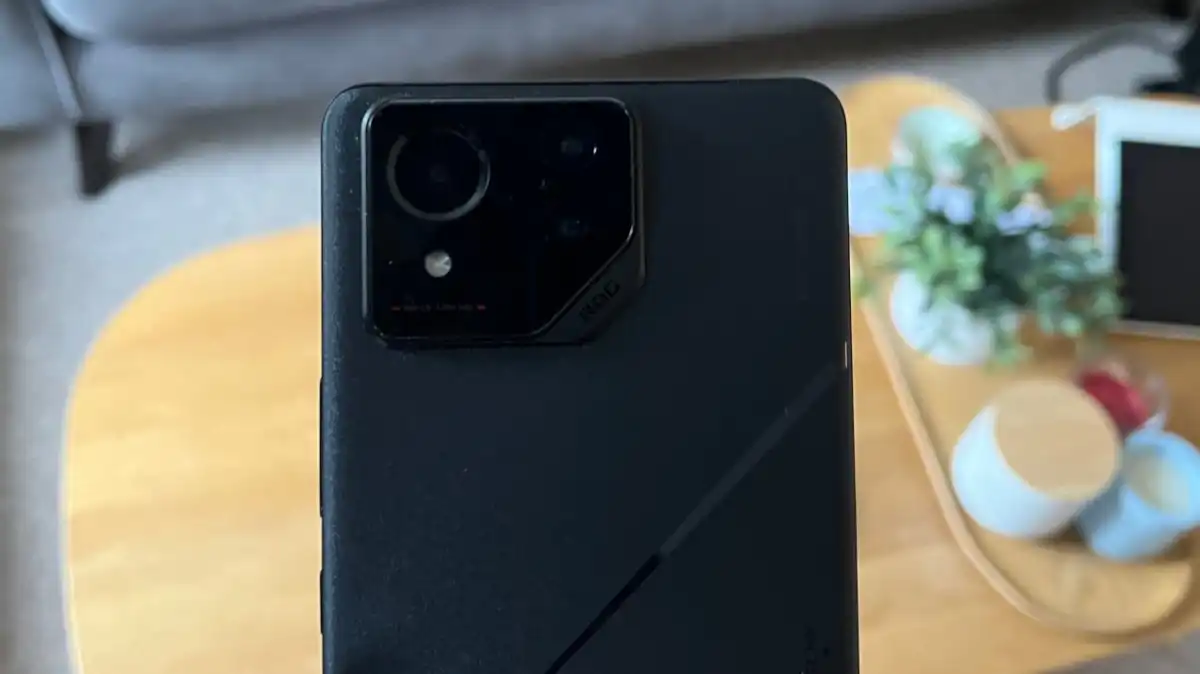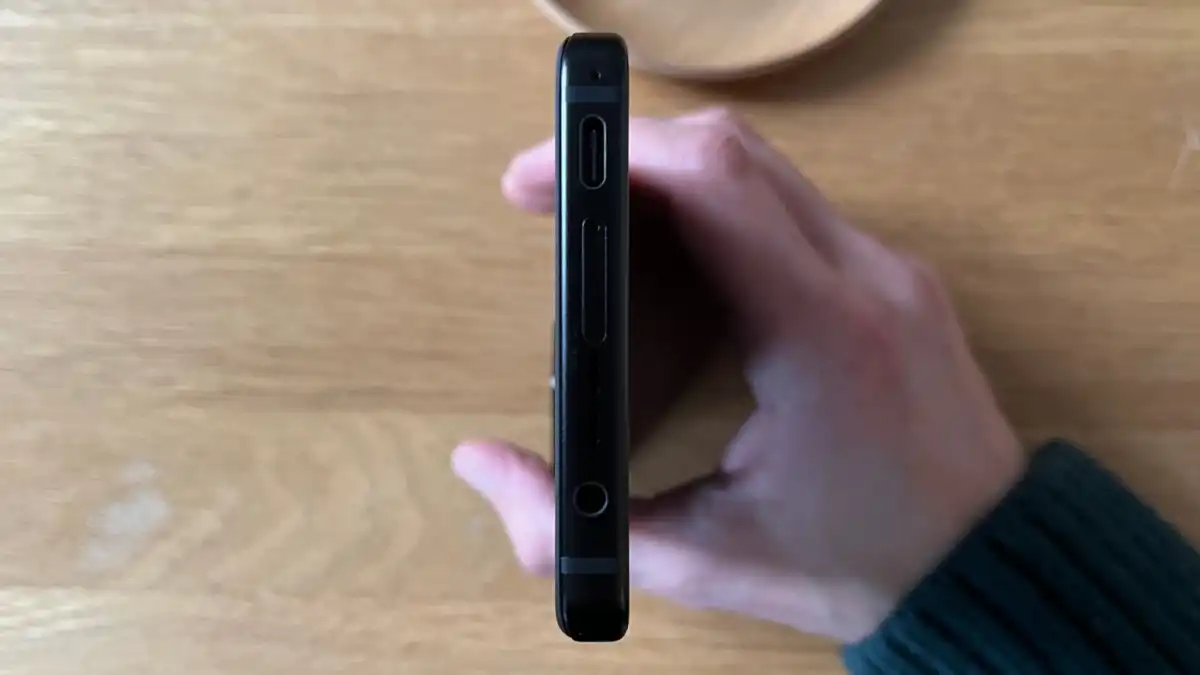For a time, Asus has been the industry leader in specialized gaming phones.
The 2023 ROG Phone 7 Ultimate was a beast of a smartphone, quickly becoming the cellphone to beat for mobile games.
With 16GB of RAM and Qualcomm’s all-conquering Snapdragon 8 Gen 2 CPU, it gave exceptional performance, justifying its high price. Asus hopes to outperform its predecessor with the ROG Phone 8 Pro.
The 8 Pro, like its predecessors, is a strong and competent piece of hardware, but this time it’s more than simply a gaming phone.
Design & Build
- New lighter build
- Minimalistic black design
- IP68 water and dustproof rating
The ROG Phone 8 Pro’s design is perhaps most known for being substantially lighter and sleeker than previous year’s entrants.
The (somewhat boisterous) white ‘futuristic’ design of the Asus ROG Phone 7 Ultimate has been replaced by the Phone 8 Pro, which features a more inconspicuous monotone black color palette that will appeal to non-gamers.

The general public will also be thrilled to see that the phone now weighs 225g, as opposed to 239g for the Phone 7. While it remains on the bigger end of the range, it is lighter than many other premium Androids (like the 234g Samsung Galaxy S23 Ultra).
The phone is also slimmer than previously, measuring 8.9mm against 10.49mm for the Phone 7 series. Again, this is a minor adjustment, but it contributes to the device’s distinct feel and mood, giving the impression that it is aimed at a broader population than in prior years.
The design of the ROG Phone 8 Pro makes it a more practical everyday phone than its predecessors
Other noticeable changes include a revamped squarish camera module on the back of the phone, which contains the triple rear lenses and flashlight. Aside from that, things are laudably simple, with a gloss black line running diagonally across the matte ‘Phantom Black’ back.
Another enhancement over earlier versions is that the Phone 8 Pro now has an IP68 certification. This makes it water resistant to a depth of up to 1.5 metres for half an hour while also providing comprehensive dust protection. Without a question, the ROG Phone 8 Pro’s design makes it a more useful everyday phone than previous models.
Screen & Speakers
- Rich 165Hz 6.78-inch AMOLED display
- Smaller top bezel & always-on display
- Dual front-facing speakers sacrificed
Like its predecessor, the ROG Phone 8 Pro has a huge 6.78-inch AMOLED display. That includes the highest refresh rate of 165Hz, but this time it uses LTPO technology. This implies that the refresh rate may automatically shift between 1-120Hz based on what you’re doing, extending battery life.
However, the increased maximum brightness is perhaps more important. The 8 Pro can achieve a maximum brightness of 2500 nits, up from 1500 on the Phone 7 Ultimate. This makes a significant impact while playing games or watching anything that demands more light, especially given how reflective the screen is.

The display is perhaps the most significant change between the two phones, with the ROG Phone 8 Pro also offering the option of an always-on display. This function is rather restricted, only showing the time, date, and battery charge, but it is still helpful.
Because of the reduced bezels surrounding the display, the 8 Pro now has a pin-hole selfie camera. It may be a matter of preference, but removing the thicker bezel at the top of the display results in a more elegant design.
The one disadvantage of having a lower top bezel is that the phone lacks the excellent twin front-facing speakers of the ROG Phone 7 Ultimate, which included an internal amplifier. The audio is still good, and does benefit from the use of spatial sound, but lacks some of that ‘wow’ factor we got before.
The audio is still good…but lacks some of that ‘wow’ factor we got before
Specs & Performance
- Superb Snapdragon 8 Gen 3
- Max 24GB RAM and 1TB storage
- Mini-cooling fan
The ROG Phone 7 Ultimate was one of the most powerful smartphones on the market when it was released in April 2023, and the Phone 8 Pro follows Asus’ history of outperforming most of its competitors.
To call the Phone 8 Pro a powerhouse would be an understatement. With the most recent Qualcomm Snapdragon 8 Gen 3 processor on board, it comfortably surpasses its predecessor in most benchmark tests.
To say that the Phone 8 Pro is a powerhouse would be something of an understatement
Its speed is further enhanced by the 16GB or 24GB of RAM on board. Not to mention Qualcomm’s Adreno 750 GPU, which was developed for gaming and can alter frame rates to within 1Hz.
There is also the choice of 512GB or 1TB of internal storage, both of which give ample room for downloads and saves. Unfortunately, there is no support for expanded storage.
Not only does the phone appear to be a juggernaut on paper, but it also performs as such, with the gadget playing all of the current Android games flawlessly.

This means it can handle all everyday tasks with ease, while the phone’s power and speed also make it ideal as a work device. It allowed me to run multiple apps at the same time without any issues, making it perfect for working on documents, images, videos or anything else.
Asus ROG Phone 8 Pro benchmarks
Clipping this to the side of the 8 Pro is advised while using the phone’s X-Mode, which activates automatically when you start playing more sophisticated games. However, it is still available individually and costs £71.99 at full price.
Cameras
- 50Mp main rear camera
- New 32Mp telephoto with 3x optical zoom
- Effective night mode
If Asus truly wants the ROG Phone 8 Pro to go beyond the ‘gaming phone’ label and flourish as an everyday smartphone, it must have an excellent camera. And with so many fantastic camera phones on the market right now, this is a challenging category to compete in.
While it cannot quite match with them, the 8 Pro represents a significant improvement in camera performance. It has a triple back lens camera module that combines a 50Mp primary lens, a 13Mp ultrawide, and a new 32Mp telephoto. Despite the move to a punch-hole selfie camera, the sensor remains 32Mp.

In practice, the main 50Mp lens – a Sony IMX890 – is capable of taking some really nice photos, with the inclusion of gimbal-based optical image stabilisation (OIS) helping to prevent blurs and smears. Images are sharp and natural-looking, with no real tendency to oversaturate photos or add too much brightness.
The 8 Pro is a big step forward when it comes to camera performance
The other two lenses are perfectly useable, albeit not as spectacular as the primary camera. The 13Mp ultrawide works well in excellent light, producing a somewhat more saturated – but still appealing – image than the primary lens.
While the telephoto lens requires a cautious photographer to get the most out of it, its 3x optical zoom may bring you closer to the action while maintaining adequate detail and clarity.
It’s also worth noting that the phone’s night mode works quite well. As some of the camera examples indicate, it may help you produce really colorful and transparent photographs after the sun has set, assuming you have a steady hand.
Battery Life & Charging
- Smaller 5500mAh battery
- 65W wired charging
- 15W wireless charging
The ROG Phone 8 Pro’s battery, at 5500mAh, is 500mAh less than the 7 Ultimate’s cell (really two cells). The primary reason for this decrease is to make the gadget thinner and lighter than its predecessors. However, Asus says that battery life stays same due to greater software efficiency.
In fact, most users will find that the phone may survive a number of days without needing to be recharged. Regular gamers should be able to get through the day, unless they play more intense games on the phone’s X-Mode.
Everyday users will find that the phone easily lasts a couple of days without needing a recharge
I never had any trouble getting through the day with the 8 Pro’s battery, but benchmark testing indicate that it lacks the exceptional lifespan of previous ROG phones. The PCMark Work 3.0 battery test replicates real-world usage at a typical 200 nits.
The 8 Pro’s score of 11 hours and 34 minutes is respectable, but it is not as outstanding as the 7 Ultimate’s 14 hours and 55 minutes. However, none make the top ten of your greatest battery life phones list.
However, charging remains very speedy with the ROG Phone 8 Pro, which comes with a 65W charger that can get the phone up to around 80% in 30 minutes. And unlike the 7 Ultimate, it also supports wireless charging at 15W, although you’ll need to purchase a compatible wireless charger (it’ll work with any that are Qi enabled) separately.

Software & Apps
- Android 14
- Highly customisable gaming modes and options
- New AI features
As with prior generations, the ROG Phone 8 Pro includes two crucial pieces of gaming software. The first is Game Genie, which displays a dashboard at the bottom of the screen and allows players to modify numerous settings while playing, such as refresh rate and gaming mode, as well as controls and screen recording.
This, together with Asus’ Armory Crate software, improves and refines gaming experiences on the 8 Pro. This is essentially a one-stop shop for the device’s games and gaming capabilities, allowing users to download and organize titles while also fine-tuning the phone’s performance.

Of course, these two capabilities serve to solidify the 8 Pro’s status as one of the top gaming phones on the market. However, the gadget includes a number of additional pleasant software features, some of which will appeal to a broader audience.
Among the most fascinating are a number of AI-powered tools. For example, the phone can offer AI-powered noise suppression during conversations, as well as a semantic search tool that makes locating the specific app or website you’re looking for much easier. AI elements for games include X Sense 2.0, which provides in-game suggestions and prompts.
Neither of these elements is groundbreaking on its own, but when combined, they contribute to a more immersive and intuitive experience.
There are a number of other welcome software features on board the device, including those that will appeal to a wider audience
In terms of core software, the phone runs Android 14 with the user-friendly ROG UI on top. Aside from those mentioned above, Asus has made no significant modifications to the software experience.
Unfortunately, it only promises two Android version upgrades, which is well behind the majority of the competitors. However, you will receive at least four years of security updates.
Price & Availability
The Asus ROG Phone 8 Pro is available in two versions, one with 16GB of RAM and 512GB of storage, and the more powerful reviewed here with 24GB and 1TB. They cost £1,099/$1,199.99 and £1,299/$1,499.99 respectively, and can be ordered directly from Asus, Asus US or from Amazon.
The phone is available to pre-order in the UK until 4 February, with Asus running an early-bird offer that provides buyers of the 16GB version with the AeroActive X cooler (normally, only the 24GB version comes with the cooler out of the box).
Specs
- Android 14
- 6.78in HDR10+ LTPO AMOLED (2400×1080) 20:9, 165Hz
- Qualcomm SM8650-AB Snapdragon 8 Gen 3 processor
- 16/24GB LPDDR5X RAM
- 512GB/1TB UFS 4.0 internal storage
- Cameras:
- 50Mp main sensor
- 32Mp telephoto
- 13Mp ultrawide
- 32Mp front facing
- Under-display optical fingerprint scanner
- 2D Face recognition
- Wi-Fi 6E/7
- Dual SIM (Nano-SIM, dual stand-by)
- Bluetooth 5.3
- 5,500mAh battery
- 65W wired charging
- 163.8 x 76.8 x 8.9mm
- 225g


